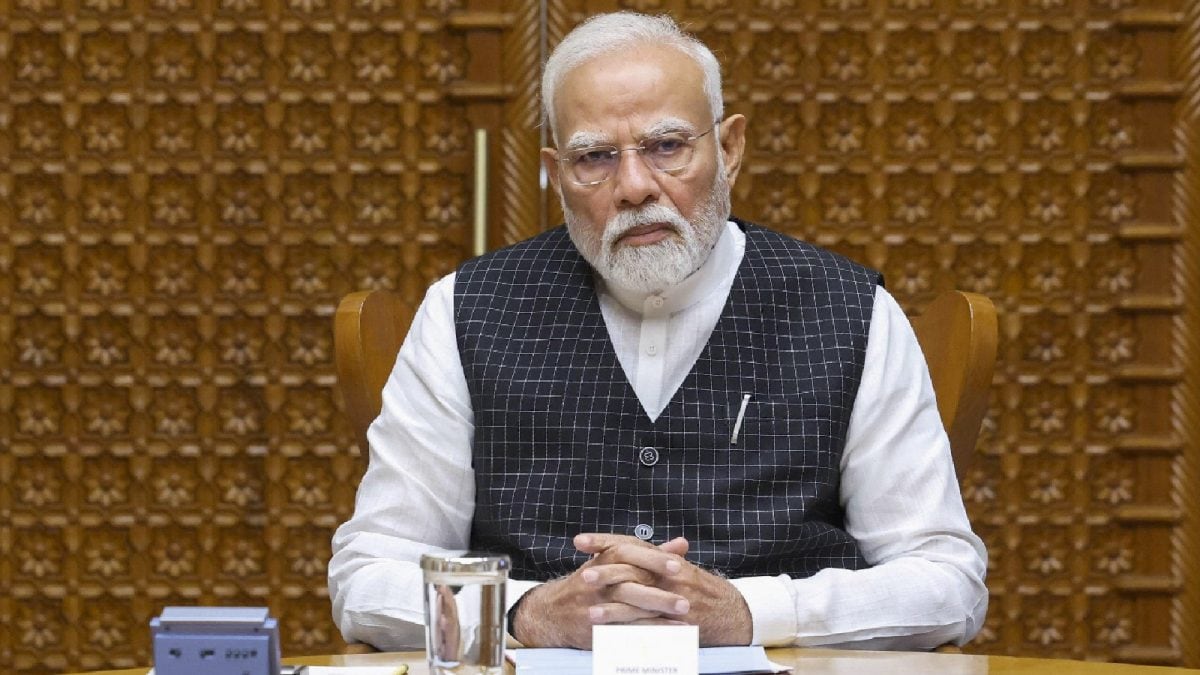How Legendary Climber Harshwanti Bisht is Saving Himalayan Ecology One Endangered Birch Tree at a Time

There’s a good possibility that Harshwanti Bisht, 67, would have enjoyed a scholarly existence in academics, far from the world of high mountains that she’s best known for today.
A chance occurrence first took her to those ethereal heights. It left her enchanted and she decided to set her books aside in order to pursue her climbing goals.
Over the years, Bisht has had a number of firsts to her name. In 1981, she became the first woman alongside two others to stand on the summit of Nanda Devi — at 7,816 metres, it is the highest mountain completely within Indian territory. And last month, she was elected as president of the Indian Mountaineering Foundation (IMF), the first time a woman will be heading the body in its 60-year existence.
The fifth of seven siblings, Bisht had an itinerant existence during her younger days. Her father, Hoshiyar Singh Bisht’s employment with the Indian Army took the family across the country. After retiring as a major, he decided to settle down in Kotdwar, which lies at the foothills of the mountains of Uttarakhand.
The hills around town transformed into Bisht’s playground during the early days. She would be out and about, completely at home on treks, climbing trees to pluck fruits and tackling steep slopes with relative ease. But her focus during those days was always on academics.
“After finishing my Master’s degree, I wished to pursue a PhD in mountain tourism. I wanted to visit the mountains to get a firsthand experience of life there and asked my father to send someone to accompany me. He suggested that as a grown-up, I was capable of chasing these goals on my own,” Bisht recalls.
A few weeks before the conversation with her father, Bisht had attended a lecture on mountaineering delivered by Colonel LP Sharma, who was principal of the Nehru Institute of Mountaineering (NIM) at that time. She pondered over her options. A mountaineering course would give her the understanding of how big mountains were climbed, the process of organising expeditions, the money involved at each step along the way and how it benefited the local population. And of course, take her up close to the big mountains.
There were protests from her parents, who believed PhDs were to be pursued in the confines of libraries, while referring to research papers and books. The logic of pursuing a mountaineering course just didn’t cross their heads.
“But I was quite firm that I had to go. Tourism back then was Delhi, Agra and Fatehpur Sikri. I wanted to study tourism in the mountains and there was no literature on it. So it was up to me to observe things and write something about it,” she says.
The studies took a backseat for the moment. In 1978, Bisht pursued her basic mountaineering course at NIM and two years later, finished her advance course from the same institute.
“There were very few women climbing during those days. Most came from cities like Bombay and Calcutta (now Mumbai and Kolkata), rather than from the mountain regions,” she says.
In 1981, Bisht was invited to an alpine-style climbing camp in Uttarkashi. It was also where they selected the team for the Nanda Devi climb in August later that year. Bisht was picked on the 12-person team alongside five other women.
“My parents were really annoyed at this point. They said I had joined the course to pursue my education and was now looking to climb mountains. I really had no answers for them, but I knew I had to go,” she says.
Nanda Devi lies in the Garhwal Himalaya and was first summited by Bill Tilman and Noel Odell in 1936. It was the highest mountain to be climbed, until the ascent of Everest in 1953. Locals in the region revere the mountain as a deity. In 1976, five years before Bisht and her team arrived at the mountain, American mountaineer Willi Unsoeld attempted a climb up the mountain alongside a team that included his daughter, Nanda Devi. After she perished on the mountain, a heart-wrenching episode that is now firmly a part of the mountain’s folklore, locals dissuaded other women from attempting the climb.
“On a few occasions, we were told that the mountain didn’t like the presence of women and that we would not be accepted. The talk around it scared us, but there was still this enthusiasm of going on a climb,” Bisht says.
“Back then, I had little idea about the mountain and how difficult it was to climb it,” she adds.
Nanda Devi is located within two concentric rings of high mountains. The most feasible approach via the Rishi Ganga gorge is an expedition in itself. The team took a week to reach base camp on 22 August. They ferried loads and established camps over the next few weeks. By 14 September, they were at Camp 4 (7,400m), gearing up for the summit push. But bad weather bogged them down at camp for the next few days.
“It was difficult to even step out of the tent — a blizzard raged outside, really windy. The more experienced mountaineers suggested we wait out the weather before making an attempt,” Bisht says.
Finally at 2.30am on 19 August, six members of the team left for the summit in three pairs of two — Bisht had teamed up with Rattan Singh, Chandra Prabha Aitwal with Sonam Paljor and Rekha Sharma with Dorjee Lhatoo. They made slow progress, plodding through deep snow until all three teams summited late in the evening between 5-6pm. They now started descending in darkness, aided by a full moon and the beams of their headlamps.
“Rattan Singh realised that we were tiring and suggested that the two of us should rope up with Chandra didi and Paljor. After continuing down for a while, Paljor slipped on the ice and started sliding. We slid for about 100 feet, until Rattan Singh arrested our fall using his ice axe. It was a miraculous escape from death,” Bisht recalls.
The descent was even more cautious there on. After 24 hours since starting out, Bisht stumbled into summit camp again. She was exhausted, but thrilled to have made it to the top. No female mountaineer has climbed Nanda Devi ever since. Once back home, the three women earned recognition for their classic ascent and were honoured in many places. But there was one praise that she holds close to heart till date.
“My parents finally relented — tum bohot ziddi ho aur ab tumhari zid puri hui (you are stubborn and now your stubborness has been rewarded),” she remembers them telling her.
Three years later though, there was heartbreak on Everest. After four ferries through the Khumbu Icefall from base camp to Camp 1, Bisht was asked to carry loads to Camp 3. She remembers forgetting her woolens at camp and turning back instead of risking frostbite to her toes.
“When the summit teams were announced, I didn’t feature on it, even though I deserved it most. I was later given an opportunity, but refused to make an attempt,” Bisht says.
“Whenever you go to a mountain, you prepare for it and work really hard. So it was very disappointing to have not summited Everest. That’s the reason I decided to discontinue mountaineering and focus on academics,” she says.
That visit to Everest gave her the opportunity to observe the work that Sir Edmund Hillary had carried out for the people of the Solu-Khumbu region — right from building schools to hospitals, to the conservation work in the Sagarmatha National Park. It was enough inspiration for her to do something alongside pursuing a teaching job and a PhD, which she eventually finished in 1993.
She trained her eyes on the Gangotri region that she had visited on multiple occasions over the years. The impact of tourism and pilgrimages was apparent and had led to wide scale deforestation, besides the accumulation of trash. In 1989, she surveyed the region and launched the “Save Gangotri” campaign. She started a nursery at Chirbasa in a bid to regenerate the birch forest that had been wiped out higher up around Bhojbasa.
“The forest department didn’t have saplings. We tried vegetative propagation but were unsuccessful. So we had to collect seeds and sow them, then shift the saplings to two sites to finally see some success,” she says.
A healthy forest of birch flourishes in the region today. Besides plantation drives, Bisht has also taken her students for cleaning expeditions and to create awareness about conservation. For her efforts, she was awarded the Sir Edmund Hillary Mountain Legacy Medal in 2013.
“If the area is finished, there will be no tourism, no pilgrimage and no income for the locals. This is the message we are trying to spread among the visitors and the mountain people,” she says.
After close to two decades as a member of the IMF and the last couple of years as its vice president, Bisht was elected to the post of president. The committee also has some fresh faces comprising youngsters, who Bisht hopes will bring fresh ideas to do something for the youth of the country.
“I would like to encourage technical climbing, not climbs like Everest that mostly see commercial expeditions where Indian mountaineers pay and the Sherpas do all the work. In 1984, we did everything on our own — opening the route, fixing ropes, load ferries and establishing camps. India needs more technically-sound mountaineers, who can climb on their own rather than go on these commercial climbs,” she says.
“I would also like more women to take up mountaineering, especially those from the mountains. There still aren’t as many as there should be,” she adds.
Bisht believes that mountaineering has handed a new dimension to her life, without which she would have been living the life of any other teacher.
“Mountaineering gave me the vision that we must think of conservation, what we can do for mountain communities, for the environment and ecology, and the sport of mountaineering itself. Everything that has happened in my life has been spontaneous and a lot of it happened because of mountaineering,” she says.
Shail Desai is a freelance writer from Mumbai who thrives on narrating a good story. Views expressed are personal.
Read all the Latest News, Breaking News and Coronavirus News here.
Source link






